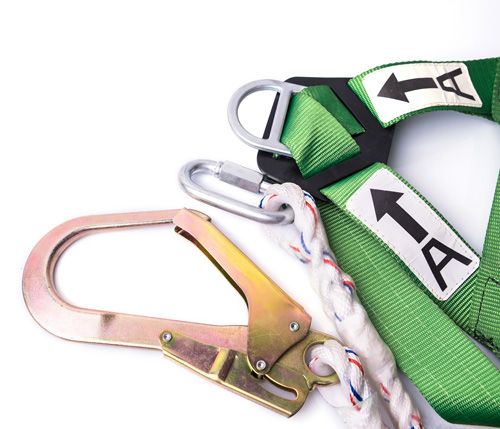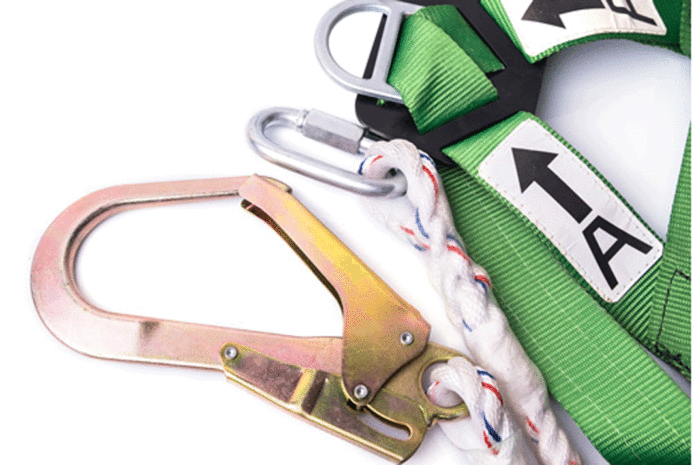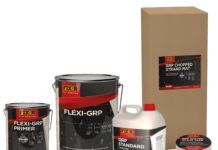 Whilst we are all aware that working at height can be dangerous, it’s simply impossible to avoid in roofing. Even though the number of incidents has reduced, it’s estimated that falls from height are responsible for around one third of workplace deaths and 6,000 major incidents every year – with the most common incidents arising from falls from ladders and through fragile surfaces.
Whilst we are all aware that working at height can be dangerous, it’s simply impossible to avoid in roofing. Even though the number of incidents has reduced, it’s estimated that falls from height are responsible for around one third of workplace deaths and 6,000 major incidents every year – with the most common incidents arising from falls from ladders and through fragile surfaces.
Whilst there are regulations in place to help ensure that safety is increased when working at height, it’s important to always make sure we are meeting or indeed surpassing these standards, and that we constantly review the procedures and equipment we have in place – so that you and those around you will have maximum protection from falls and falling objects.
Whatever roof you’re working on, the starting point must be a thorough risk assessment. Factors to review include? do you really need to work from height the height of the project, the duration and frequency of the job, and the condition of the surface being worked on. Once assessed, you must ensure that you are using the appropriate protective and access equipment and PPE to mitigate any dangers. The type of roof, the work required, and even the weather, will also dictate the equipment needed to ensure safety. Whichever equipment is deployed thereafter, it should always be maintained and checked regularly.
So, as safety at height can never be taken for granted and needs to be reviewed and considered constantly, let’s recap on the safety options available to us and how to help maximise them.
Pitched or sloping roofs: maintaining stability can present a real challenge, with slips being the biggest threat. Factors such as hoisting and lowering materials, gaining access to the ridge once the tiles are fitted and the transportation of materials and mortar should be considered. Scaffolding, working platforms, stair towers, lifting equipment and PPE such as harnesses, as well as fall protection systems, can be vital solutions.
Flat roofs: equally, danger lurks from having unprotected edges on flat roofs. Unless properly secured, you and your equipment, or any other objects, are at risk from falling. Guard rails and toeholds should always be included when working with unsecured edges and fall arrest equipment should be in place for everyone. Ladders should only be used for low risk, short duration work.
Fragile roofs: commonly found on many industrial buildings, these roofs are usually not structurally reliable to withstand a person’s weight and the equipment they’re carrying. Hence, the risk of falling through the roof or dislodging materials needs to be assessed and preventative action taken accordingly. Roof ladders and crawl boards are generally required, along with access equipment to provide a stable platform.
Rooflights and panels: often constructed out of lightweight materials that are fragile and easy to break, they represent a significant risk should a person stand on them, especially those that are not covered or guarded. Very often, they can be difficult to see, so it’s vital that everyone is aware of their existence and location.
Falling objects: it sounds obvious to say that it’s important to ensure that no materials or objects are thrown or tipped from height in circumstances where it’s liable to cause injury to anyone, and that all materials and objects should be stored in such a way as to prevent this occurring. However, it’s something that can’t be taken for granted when regularly working at height and whilst handling heavy products, it’s essential to remain vigilant to ensure the safety of those working and close to the roof.
Product choice: your choice of roofing products can significantly help improve your safety. Lighter products, and those such as dry fix solutions – which help eliminate the need for multiple trips to mix and carry mortar – can help reduce the dangers of falling. Others include systems to enable profiled roofsheets or rooflights to be replaced from below, thus eliminating the need to access dangerous fragile roofs.
Causing zero harm: it pays to align yourself to a supplier that is meticulous in supplying only those products and services that meet all health and safety requirements, thereby giving you maximum protection and peace of mind. Just as it’s important for you to keep those around you safe when working at height, it’s important that your suppliers keep you safe in your interactions with them.
Even with all of the right steps in place, roofing is still potentially dangerous. Every contractor needs the appropriate knowledge, skills, and experience to carry out work safely and competently and should develop their health and safety competence on an ongoing basis. Ensuring that every job is properly planned, supervised and carried out by competent people with the skills, knowledge and experience to do so is key to maximising safety when working from heights. If you need further guidance, visit www.hse.gov.uk for free a copy of ‘Health and Safety in Roof Work.’ When it comes to safety, cutting corners is not an option – manage the risks.




